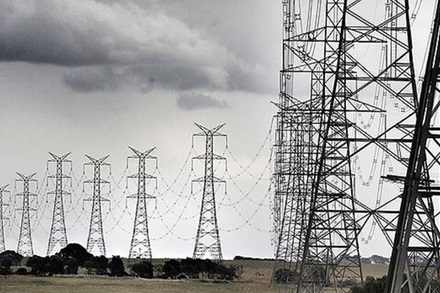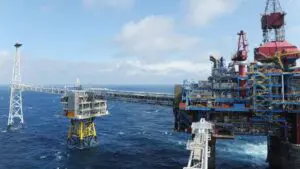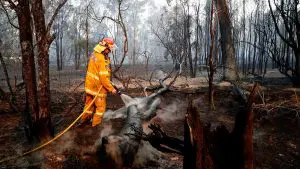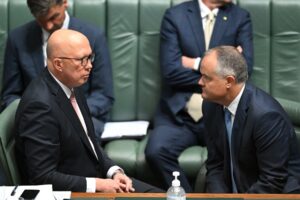On Thursday, we released a new market study “The Energy Trilemma: A cost curve for emissions reductions & energy storage in the Australian electricity sector “.
As policymakers begin to consult on policy design, the study aims to provide a quantitative basis for identifying emissions reductions opportunities in the electricity sector, and a more detailed understanding of the cost of ‘reliable’ energy supply in Australia, including energy storage technologies.
The study identifies emissions reduction activities in the power sector – such as retrofitting existing coal-fired plants, developing new wind, solar, gas and ‘clean coal’ generation – with analysis mapping the size and cost of abatement through in 2020 and 2030, in the form of a marginal abatement cost (MAC) curve.
Given MAC analysis does not try to capture the full complexity of power markets, nor analyse how the power generation mix will develop over time, the study also explores the economic attractiveness of electricity supply by calculating the levelised cost of energy (LCOE).
To consider intermittent versus dispatchable power on a like-for-like basis, we incorporate the cost of individual storage technologies into the supply of electricity generation, which we refer to this as the levelised cost of “firm” energy (LCOFE).
This enables us to consider the “full cost” for renewable energy to supply dispatchable power, such as following daily energy demand swings or being available to immediately provide additional power for short periods.
The market study was supported by consultation with over 45 industry participants, including electricity generators, large industrial consumers, project developers, industry groups, financial institutions, investors, and policymakers.
Over the course of the 4-month consultation process, stakeholders provided feedback on technology readiness, cost assumptions and barriers to investment. This input was built into our modelling assumptions and represented in our cost databases.
Below, we summarise the key findings of our market study, and the implications for the “new NEM”.
There are several pathways to transition to zero emissions
Complex inter-dependent relationships characterise the electricity sector more than any other. Thus, the abatement potential of our marginal abatement cost (MAC) curve, 484 million tonnes (Mt), is more than the entire emissions of the electricity sector (186 Mt in 2030). This is because many activities could supply the majority of emissions reductions by 2030 by themselves.
For example, a shift to a gas dominated system would result in a large emissions reduction by 2030, while a shift to distributed solar PV could also result in a similar scale of abatement. The latter, however, would decrease the need (and market) for gas-fired generation, reducing the abatement potential of a coal to gas shift.
Figure 1: RepuTex marginal abatement cost curve – Electricity sector (2030).

The cost curve shows a range of abatement options at various price points, with four key groups of abatement measures underpinning the decarbonisation of the sector: increased renewable generation, demand reduction via the take-up of solar PV, the phase out of coal generation, and energy storage.
Among abatement activities, demand reduction via the take-up of solar PV has the lowest marginal cost of emissions reduction, with capital costs anticipated to continue to fall, while abundant financing is expected to persist. Among energy generation technologies, wind and solar generation represent the cheapest source of abatement from centralised facilities.
“Clean coal” not viable at scale before 2030 – will not support Australia’s 2030 target under Paris Agreement
While there are many opportunities for emissions reductions in the sector, findings indicate “clean coal” technology is not among the cheapest.
While carbon capture and storage (CCS) has potential to make a significant emissions impact, projected costs indicate that CCS will not be commercially mature at the GW scale until at least the middle of the next decade. We see costs for CCS falling as low as $100/MWh by 2030, at which point large-scale projects may be feasible if there is appetite for baseload-only generation. On that timeline, however, the contribution of abatement from CCS in support of Australia’s 2030 emissions reduction target is limited.
Renewable energy technologies constitute the cheapest form of investment in new energy in Australia, with Wind and Solar cheaper than new conventional fossil fuel generation sources such as Gas and Coal.
This reflects that the capital cost of intermittent renewable technologies are now lower than building new coal-fired facilities and have much lower fuel costs than a gas-fired facility.
In parallel, the forecast rising price of gas means that existing gas-powered electricity generators will become more expensive, while baseload-only coal fired plants face a diminishing market and must consider expensive carbon capture options in order to justify such long-term investments.
System reliability – the need for “flexible supply”
Given wind generation has the lowest LCOE, large amounts of low-cost wind generation are displacing existing generation, causing such facilities to generate less energy, recover revenue less frequency, and increasingly exit the market.
As older coal and gas-fired generators leave the market, system reliability has become an issue in states with high levels of intermittent generation. This is because intermittent generation does not necessarily coincide with peak demand (timing) and cannot be easily ramped up to follow a load forecast (controllability).
To alleviate pressure on system reliability, we view “flexible generation” as a critical addition to the system to better adjust to annual and daily peaks, in parallel to investment in low-cost generation. This may be in the form of load-following generation to adjust as demand changes throughout the day, as well as peaking generation to provide reserve capacity that is available to ease critical situations.
With the market’s preference for cheaper intermittent technologies necessitating flexible generation that can ramp up or down, we see “baseload-only” generation as being increasingly unable to compete in Australia’s future electricity system.
This suggests that low emissions baseload-only technologies such as nuclear and “clean coal” are likely to be ill-suited to Australia’s future electricity market, with more flexible generation technologies favoured from and economic and policy standpoint.
Analysing the ‘full cost’ of power supply – including energy storage for renewable energy
To consider the full cost of intermittent versus dispatchable power on a like-for-like basis, we calculate the levelised cost of firm power (LCOFP), taking account of the cost of supplying flexible, instantaneous power across all technologies. The chart below shows an illustrative example of the full cost of energy being considered for peaking services.
Figure 2: Levelised cost of energy adjusted to consider storage use – For Peaking

Traditionally, gas-fired generators have been the least cost technology that could provide energy security, such as load-following and peaking services. Analysis indicates, however, that new renewables with energy storage is now competitive with new gas in providing flexible generation.
This is because of recent declines in capital costs of both wind and solar, coupled with rises in electricity and gas prices, resulting in a rebalancing of the least-cost technologies.
Analysis indicates that new coal-fired facilities remain the cheapest source of baseload-only generation, however, findings point to a diminishing role for baseload generation, with new baseload-only generation facing considerable commercial barriers – irrespective of how clean or dirty it is – given its lack of flexibility to compete in Australia’s future electricity system.
To download a copy of the RepuTex market study, please click here. You can also register to attend RepuTex’s upcoming webinar, “Australia’s Future Energy Pathway – The new shape of the NEM to 2030”. RepuTex is Australia’s largest provider of energy and emissions market analysis, with customers at over 150 of the region’s leading Power, Energy, Metals, Mining, Government and Financials firms.








